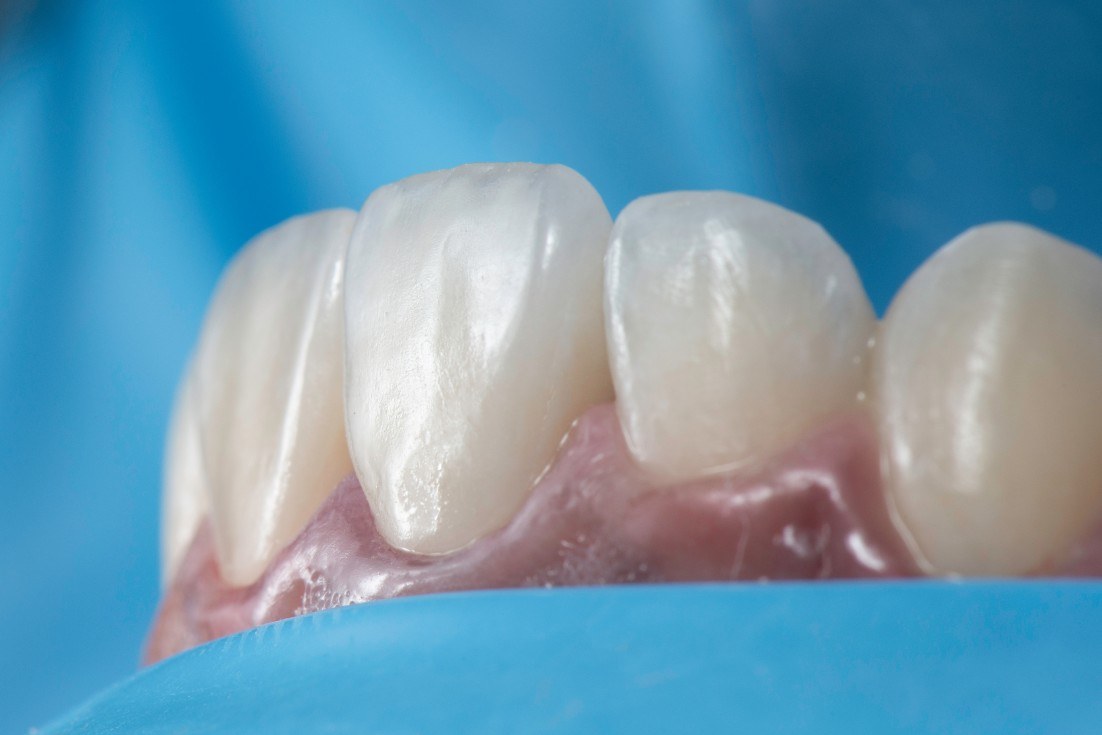
A great smile makes for more than a pretty picture. It can lead to increased confidence, higher self-esteem, even improved energy and mood! With today’s dental advances, almost anyone can enhance their smile. Below we break down two of the most widely used cosmetic procedures – dental bonding and veneers. In general, bonding is typically the choice for small changes in an overall healthy mouth, while veneers tend to work better for patients who need more significant changes. However, each method has its own benefits and best use scenarios.
Bonding
Dental bonding (also called tooth bonding) is the practice of using soft, tooth-colored resin to fix a tooth’s appearance. The pliable resin is applied like a thick putty and sculpted into shape before being cured with a high-intensity light that ultimately “bonds” the resin to the tooth. Similar to veneers, bonding covers the damage to create the appearance of a healthy tooth.
Benefits:
- Bonding is a minimally invasive procedure that generally doesn’t require any change to the tooth itself.
- Almost all patients qualify for treatment, even children with chipped or damaged teeth.
- The procedure often takes place in a single visit.
- In most cases anesthesia is not necessary.
- Bonding is less expensive than many other cosmetic procedures.
- No down time is needed.
Due to the resin material, dental bonding has aesthetic limitations that can make it hard to mask very discolored teeth. However, it is a good choice for patients who have minor aesthetic issues that don’t require extensive treatment.
Bonding is often the best option for patients who need to:
- Fix cracked, chipped, and damaged teeth
- Change the shape of teeth
- Close small gaps or spaces between teeth
- Improve the appearance of discolored teeth
- Relieve pain from tooth roots exposed due to gum recession
- Fill a cavity without using silver amalgam fillings
Veneers
Cosmetic veneers are ultra-thin shells made of porcelain that cover the front surface of a tooth. Custom created to look exceptionally realistic, these shells bond to a patient’s tooth with a strong dental adhesive. Unlike bonding, porcelain veneers are hard from the start. Since they can’t be shaped further, dentists need to sculpt the existing tooth to make room for the veneer. Once shaped, an impression of your teeth will be taken and sent to a dental lab for fabrication. While your final veneers are being created, you’ll be fitted with a temporary set. When the final veneers are ready, you’ll return to your dentist to have them fitted to your teeth.
Benefits of Veneers:
- Porcelain is white and translucent, which gives veneers a realistic sheen that cannot be achieved with bonding.
- Porcelain does not stain.
- Veneers create a beautiful, white, uniform smile almost immediately.
- They have a lifespan of up to 20 years.
Veneers work better for patients who need more significant changes to their smile due to:
- Severe stains and discoloration
- Cracked teeth
- Chipped teeth
- Large gaps in between your teeth
- Crooked teeth (mild to moderate)
- Teeth that overlap
- Worn teeth
Schedule A Consultation
If you’re ready for a smile makeover, contact our office to schedule a consultation. Our team is ready to answer any questions and recommend the best option for you.

